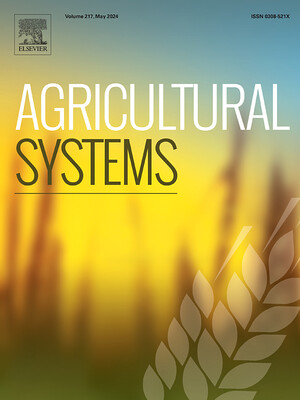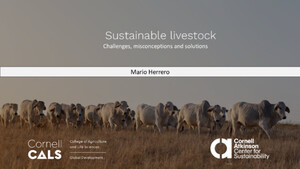
Sustainable land management interventions lead to carbon sequestration in plant biomass and soil in a mixed crop-livestock system: The case of Geda watershed, central highlands of Ethiopia
Abstract
Sustainable land management interventions were introduced in Geda watershed in 2012 to reduce soil erosion, improve water infiltration, and increase plant-carbon inputs into the soil. This study explored the impact of the interventions on biomass production, carbon stock, and carbon sequestration. Stratified sampling was employed in the main and the dry seasons in the treated and untreated sub-watersheds that are found adjacent to each other. Above- and below-ground plant biomass, soil bulk density and organic carbon in 0–15- and 15–30-cm depths, and soil moisture content in 0–20- and 20–40-cm depths were collected from the crop, grazing, and tree lucerne plots. All analyses were performed based on standard procedures.Plant biomass production, carbon stock, and carbon sequestration varied highly significantly (P ≤ 0.001) among sub-watersheds, landscape positions, and land uses. Higher mean values were observed for treated sub-watershed, lower landscape position, and tree lucerne plot. The higher mean values in the lower landscape position of the treated sub-watershed were due to tree lucerne plantation. Similarly, topsoil (0–15 cm) carbon stock was statistically higher (P ≤ 0.001) in the treated sub-watershed and at tree lucerne plot (P ≤ 0.05). In addition, carbon stock by sub-surface soil (15–30 cm) was significantly higher (P ≤ 0.001) in the treated sub-watershed under crop and grazing lands but the higher value was in cropland and in the upper position. This could be due to the decomposition of organic materials from biomasses of crops and biological supporting measures (tree lucerne and Phalaris) facilitated by tillage. Six years of sustainable land management interventions led to the sequestration of 12.25, 7.77, and 13.5 Mg C ha−1 under cropland, tree lucerne, and grazing plots, respectively.Sustainable land management interventions revealed auspicious ecological impacts in Geda watershed in terms of improving plant biomass production, carbon stock, and correspondingly capturing higher carbon dioxide equivalent taking untreated sub-watershed as a baseline. Prohibition of free grazing was the key element of the intervention to reduce biomass export and increase carbon sequestration in the treated sub-watershed. Thus, sustaining tree lucerne plants as a conservation measure and the prohibition of free grazing practices are principally essential.
Citation
Terefe, H., Argaw, M., Tamene, L. and Mekonnen, K. 2020. Sustainable land management interventions lead to carbon sequestration in plant biomass and soil in a mixed crop-livestock system: The case of Geda watershed, central highlands of Ethiopia. Ecological Processes 9:34.










